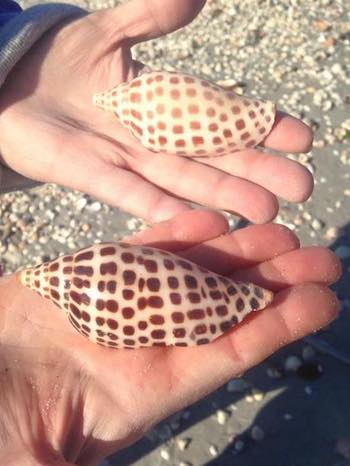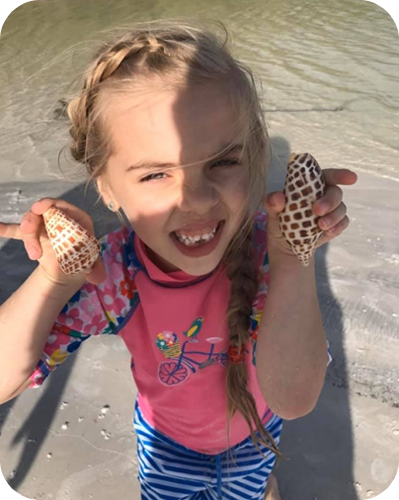Nestled on the Gulf Coast of Florida, Marco Island boasts a rich and diverse array of fish species that attract anglers worldwide. The island’s unique location, surrounded by pristine waters, mangroves, and flats, provides the perfect environment for various fish species. In this article, we will delve deeper into ten of the most popular fish species found around Marco Island. Understanding their habits, habitats, and best fishing techniques will increase your chances of a successful fishing trip. And when you’re ready to explore the waters of Marco Island, our fishing charter company is here to guide you on an unforgettable adventure.
Snook
Overview and Identification
Snook are one of the most sought-after gamefish in Florida, known for their thrilling fight and acrobatic leaps when hooked. Snook have a distinct lateral line, a protruding lower jaw, and a sloping forehead, making them easy to identify. In addition, they can range in size from a few pounds to over 30 pounds.
Habitat and Distribution around Marco Island
Snook thrive in Marco Island’s estuaries, mangroves, and seagrass beds. They prefer warmer water temperatures and are often found in shallow areas near structures like docks and mangrove roots.
Fishing Techniques and Best Practices
Live bait, such as shrimp and small baitfish, is most effective when targeting snook. However, they can also be caught using artificial lures, like soft plastics and topwater plugs. Be prepared for an intense fight, as snook are known for their powerful runs and jumps.
Seasonal Patterns and Regulations
The best time to target snook around Marco Island is during the warmer months, from late spring to early fall. Snook are subject to strict regulations, including catch-and-release only during specific seasons and size limits. Be sure to familiarize yourself with the current regulations before heading out on the water.
Redfish
Overview and Identification
Redfish, also known as red drum, are popular among anglers for their fighting ability and great taste. They are easily identified by their copper-bronze color and the distinctive black spot(s) near their tail. Redfish can grow up to 60 pounds, but most caught in the Marco Island area range between 4 and 10 pounds.
Habitat and Distribution around Marco Island
Redfish inhabit a variety of environments, from shallow grass flats and oyster bars to deeper channels and mangrove shorelines. They can often be found in small schools, especially during the fall months.
Fishing Techniques and Best Practices
Live bait, such as shrimp, pinfish, and mullet, is effective for catching redfish, but they can also be caught using artificial lures like soft plastics, spoons, and topwater plugs. Sight casting to tailing redfish in shallow water is a thrilling experience for any angler.
Seasonal Patterns and Regulations
Redfish are active year-round in Marco Island, but the best time to target them is during the fall, when they form larger schools. Florida regulations enforce a slot limit and daily bag limit for redfish, so be sure to familiarize yourself with the rules before your trip.
Tarpon
Overview and Identification
Tarpon are one of the most iconic gamefish in Florida, known for their incredible strength, acrobatics, and ability to reach sizes over 200 pounds. They have a distinctive silver color, large scales, and a protruding lower jaw with an upturned, bony plate.
Habitat and Distribution around Marco Island
Tarpon are migratory fish, and Marco Island is a popular stop along their route. They can be found in a variety of habitats, from shallow flats and mangroves to deeper channels and offshore waters. Tarpon are often seen rolling on the surface, making them easier to locate.
Fishing Techniques and Best Practices
Live bait, such as crabs, mullet, and pinfish, is highly effective for tarpon, but they can also be caught on artificial lures and flies. Due to their size and strength, heavy tackle and a strong leader are recommended. When hooked, tarpon are known for their incredible leaps, so be prepared for an intense battle.
Seasonal Patterns and Regulations
Tarpon are most commonly found around Marco Island from late spring to early fall during their annual migration. Catch-and-release is the standard practice for tarpon, as they are not typically targeted for consumption. Ensure you have a proper tarpon tag if you plan to keep one within the legal size limits.
Spotted Seatrout
Overview and Identification
Spotted seatrout, also known as speckled trout, are popular inshore gamefish due to their aggressive nature and willingness to strike a variety of baits. They are easily identified by their elongated body, numerous black spots along their back, and a distinct yellow mouth.
Habitat and Distribution around Marco Island
Spotted seatrout prefer seagrass beds, shallow flats, and areas near oyster bars. They are often found in small schools, and their presence can be indicated by the presence of baitfish and diving birds.
Fishing Techniques and Best Practices
Live shrimp, pinfish, and mullet are effective baits for spotted seatrout, but they are also known to strike a variety of artificial lures, including soft plastics, jigs, and topwater plugs. Light tackle is ideal for these fish, as they generally range between 1 and 6 pounds.
Seasonal Patterns and Regulations
Spotted seatrout can be found year-round in Marco Island, with peak activity during the spring and fall months. There are size and bag limits in place, so be sure to check the current regulations before targeting this species.
Grouper
Overview and Identification
Grouper are bottom-dwelling fish known for their powerful fight and delicious taste. They are characterized by a large mouth, stout body, and varying color patterns depending on the species. Gag grouper and red grouper are the most common species found around Marco Island.
Habitat and Distribution around Marco Island
Grouper prefer rocky ledges, reefs, and wrecks in deeper waters. They can be found at various depths, from 30 feet to over 200 feet, depending on the species and time of year.
Fishing Techniques and Best Practices
Live bait, such as pinfish, grunts, and squirrelfish, is highly effective for grouper, but they can also be caught on vertical jigs and large artificial lures. Due to their powerful fight and tendency to seek cover in structure, heavy tackle and a strong leader are recommended.
Seasonal Patterns and Regulations
Grouper are active year-round around Marco Island, but the best time to target them is during the cooler months when they move to shallower waters. There are size and bag limits for various grouper species, as well as seasonal closures. Be sure to check the current regulations before your trip.
Snapper
Overview and Identification
Snapper are highly sought-after for their delicious flavor and spirited fight. Several species can be found around Marco Island, including red snapper, mangrove snapper, and lane snapper. They are characterized by their large, sharp-toothed mouths and varying color patterns depending on the species.
Habitat and Distribution around Marco Island
Snapper can be found around reefs, wrecks, and rocky structures in both shallow and deep waters. Mangrove snapper are also commonly found in estuaries and mangrove shorelines.
Fishing Techniques and Best Practices
Live shrimp, pinfish, and small baitfish are effective baits for snapper, but they can also be caught on cut bait and artificial jigs. Light to medium tackle is suitable for most snapper species, but be prepared for a strong fight as they often try to return to cover.
Seasonal Patterns and Regulations
Snapper can be found year-round in Marco Island, but red snapper have a limited season, typically in the summer months. Each snapper species has specific size and bag limits, so be sure to familiarize yourself with the current regulations before targeting them.
Pompano
Overview and Identification
Pompano are prized for their delicious taste and spirited fight on light tackle. They are characterized by their deep, compressed bodies, silvery color, and blunt snouts.
Habitat and Distribution around Marco Island
Pompano are typically found in shallow water along the beaches, around sandbars, and near passes. They prefer clean, sandy bottoms and can often be seen jumping out of the water.
Fishing Techniques and Best Practices
Small jigs, especially those resembling sand fleas, are highly effective for pompano, as are live shrimp and sand fleas. Light tackle is ideal for these fish, as they generally range between 1 and 5 pounds.
Seasonal Patterns and Regulations
Pompano can be found in Marco Island throughout the year, but they are most abundant during the spring and fall months. There are size and bag limits in place, so be sure to check the current regulations before targeting this species.
Sheepshead
Overview and Identification
Sheepshead are known for their unique appearance, featuring bold vertical black stripes and a mouth full of human-like teeth. They are prized for their delicious taste and challenging fight.
Habitat and Distribution around Marco Island
Sheepshead are often found around docks, pilings, bridges, and mangroves, where they feed on crustaceans such as barnacles, shrimp, and crabs.
Fishing Techniques and Best Practices
Live shrimp, fiddler crabs, and sand fleas are effective baits for sheepshead, but they can also be caught using small jigs tipped with shrimp or crab. Light to medium tackle is suitable for these fish, which generally range between 2 and 8 pounds.
Seasonal Patterns and Regulations
Sheepshead are most abundant around Marco Island during the winter and early spring months when they spawn. There are size and bag limits in place, so be sure to familiarize yourself with the current regulations before targeting this species.
Cobia
Overview and Identification
Cobia are large, powerful fish that are highly sought-after for their impressive fight and delicious taste. They are characterized by a long, slender body, dark brown color, and a flat, broad head.
Habitat and Distribution around Marco Island
Cobia are often found around reefs, wrecks, and other underwater structures, as well as near large marine animals such as rays and sharks. They are known to follow boats, making them an exciting catch for anglers.
Fishing Techniques and Best Practices
Live bait, such as pinfish, mullet, and eels, is effective for cobia, but they can also be caught using large artificial lures and jigs. Heavy tackle is recommended due to their size and strength, as cobia can grow up to 100 pounds.
Seasonal Patterns and Regulations
Cobia are most commonly found around Marco Island during the spring and early summer months as they migrate through the area. There are size and bag limits in place, so be sure to check the current regulations before targeting this species.
Conclusion
Marco Island’s diverse fish populations offer an incredible variety of angling opportunities, from stalking tailing redfish on the flats to battling powerful tarpon in deeper waters. By understanding the habits, habitats, and best fishing techniques for each species, you’ll increase your chances of a successful and memorable fishing trip.
When you’re ready to experience the thrill of fishing in Marco Island, our charter company is here to provide you with expert guidance, top-notch equipment, and a fun, safe environment for anglers of all skill levels. Whether you’re a seasoned pro or a first-timer, we’ll help you create unforgettable memories on the beautiful waters of Marco Island. Book your fishing charter with us today, and let’s reel in some unforgettable moments together.





